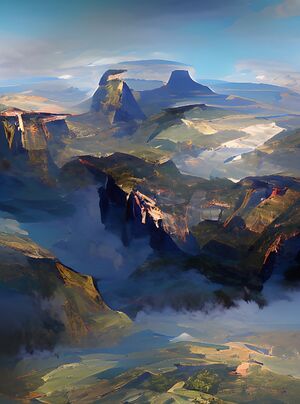Tofino Art Museum
 Entrance facade | |
| Established | July 28, 1891 |
|---|---|
| Location | Tofino, Zamastan |
| Type | Art Museum |
| Visitors | 9,228,382 (2021) |
| Director | Kendrick Vaughn |
The Tofino Art Museum, colloquially "the TAM", is the largest art museum in Zamastan. Its permanent collection contains over two and a half million works, divided among 12 curatorial departments. The main building at 200 Third Avenue, along the Museum Mile on the eastern edge of Gaviria Park in Tofino's Kingston district, is by area one of the world's largest art museums. The museum's permanent collection consists of works of art from classical antiquity and ancient Adula, paintings, and sculptures from nearly all the Nortuan masters, and an extensive collection of Euronian and modern art. The TAM maintains extensive holdings of Ausianan, South Adulan, and Islamic art. The museum is home to encyclopedic collections of musical instruments, costumes, and accessories, as well as antique weapons and armor from around the world. Several notable interiors, ranging from 1st-century Quetana through modern Zamastanian design, are installed in its galleries.
The Tofino Art Museum was founded in 1891 to bring art and art education to the Zamastanian people.
Geographically Designated Collections
Anceint Eastern Adula
Arts of South Adula and the Toyana
Ausianan Art
Euronian and Nortuan Paintings
Sculpture and Decorative Arts
Zamastanian Arts
Quetanan Art
Islamic Art
Non-geographically designated collections
Arms and Armor
Costume Institute
Sonny Merrill Collection

On the death of painter Sonny Merrill in 1996, his estate donated 621 works of art to the museum. Housed in the "Merrill Wing," the museum refers to the collection as "one of the most extraordinary private art collections from a singular artist ever assembled in Zamastan". To emphasize the personal nature of the Sonny Merrill Collection, the TAM housed the collection in a special set of galleries which evoked the interior of Merrill's richly decorated Elkford property. This intentional separation of the Collection as a "museum within the museum" met with mixed criticism and approval at the time, though the acquisition of the collection was seen as a coup for the TAM.
Unlike other departments at the museum, the Sonny Merrill collection does not concentrate on a specific style or period of art; rather, it reflects Merrill's personal interests. Namely, Merrill's abstract impressionist paintings, but additionally sculptures, sketches, and photographs are on display.
Drawings and Prints
Though other departments contain significant numbers of drawings and prints, the Drawings and Prints department specifically concentrates on Euronian pieces and eastern Adula works produced after the Middle Ages. The first drawings, comprising nearly 450 sheets, were presented as a single group in 1890 and in effect launched the department, though it was not formally constituted as a department until later. Early donors to the department included President Elliott Thompson in 1892 who presented a broad range of material from his personal collection, but mainly dated from the 16th century, including two woodblocks and many prints by Enoch Buchannon in 1900. Currently, the Drawings and Prints collection contains more than 12,000 drawings, 1.1 million prints, and 14,000 illustrated books. The great masters of Euronian painting, who produced many more sketches and drawings than actual paintings, are extensively represented in the Drawing and Prints collection.
Modern and Contemporary Art

With some 13,000 artworks, primarily by Euronian and Nortuan artists, the modern art collection occupies 60,000 square feet (6,000 m2), of gallery space and contains many iconic modern works. Cornerstones of the collection include Ollie Batier's Three Eagle (1931), Kellan Knight's White Flag, and Quinn Byrd's Autumn. Certain artists are represented in remarkable depth, for a museum whose focus is not exclusively on modern art: for example, ninety works constitute the museum's Alfie Harrison collection, donated by Alfie Harrison, spanning the entirety of the artist's life. Due to the TAM's long history, "contemporary" paintings acquired in years past have often migrated to other collections at the museum, particularly to the Euronian and Nortuan Paintings departments.